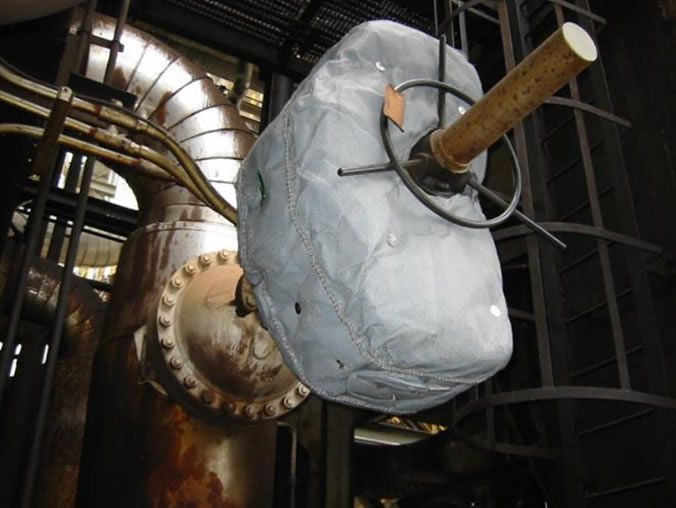RAPID RISE FIRE BLANKET
FB2000MSSISSIM (HT1093C-MSSISSIM)
INTRODUCTION
Shannon Rapid Rise Fire Blankets are a CAD designed, CNC produced, high quality pre–engineered insulation system designed to protect equipment from extreme (Catastrophic Heat) temperatures not exceeding 2000˚ F (1093˚C). Flexible and easy to install, remove and reinstall, this allows for quick access and easy equipment serviceability. These Shannon Fire blankets include a layer consisting of Knitted Stainless Steel Wire Mesh. Shannon Rapid Rise Fire Blankets are chemical and weather resistant. Reference: ANSI/UL-1709-1991 Risk Mitigation.
Common Applications and Markets
These include Oil & Gas Industry, Chemical, Petro Chemical Process. Motor Operated Valves (MOV’s), Valve and Fittings, Structural Columns, Process Systems, Equipment, Cable Trays, Controls.
Service Temperature/Condition
This design is to act as a Thermal Barrier with a maximum service temperature of 2000˚F (1093˚C).
Product Components
The Outer Jacketing consists of a layer of Stainless Steel Type 304 Knitted Wire Mesh (.011” Dia. @ 16SF/LB – 0.28 mm Dia. @ 3.3 m2/KG) and 23oz/yd² (781g/ m²) Silicone Coated Silica Ceramic Fabric. The inner jacketing consists of a layer of Stainless Steel Knitted Wire Mesh (same as above) on the outside, encasing a layer of 23oz/yd² (781g/ m²) Silicone Coated Silica Ceramic Fabric. The Insulation core is a 128 kg/m³ (8lb/CF) Ceramic Needled Fiber Mat, encapsulated by the Knitted SS Mesh, Silica Ceramic Cloth and SS Wire Mesh, then stapled together, producing a Self-Contained Blanket System. The Blanket System includes an Integral Fastener for install & removal.

Rapid Rise – Fire Blanket
BLANKET THICKNESS SURFACE TEMPERATURE REFERENCE
Operating Temp |
Thickness |
Surface Temp |
Thickness |
Surface Temp |
Thickness |
Surface Temp |
|---|---|---|---|---|---|---|
| 538˚ C (1200˚ F) | 50 mm(2″) | 88˚ C (191˚ F ) | 80 mm (3.0″) | 72.0˚ C (161.0˚ F ) | 88 mm (4.0″) | 62˚ C (144.0˚ F ) |
| 760˚ C (1400˚ F) | 50 mm(2″) | 107˚ C (225˚ F ) | 80 mm (3.0″) | 86˚ C (187˚ F ) | 102mm(4.0″) | 74˚ C (165.0˚ F ) |
| 871˚ C (1600˚ F) | 50 mm(2″) | 128˚ C (262˚ F ) | 80 mm (3.0″) | 102˚ C (216˚ F ) | 102mm(4.0″) | 87˚ C (189.0˚ F ) |
| 982˚ C (1800˚ F) | 50 mm(2″) | 173˚ C (344˚ F ) | 80 mm (3.0″) | 119˚ C (246˚ F ) | 102mm(4.0″) | 101˚ C (214.0˚ F ) |
| 1093˚ C (2000˚ F) | 50 mm(2″) | 201˚ C (393˚ F ) | 80 mm (3.0″) | 137˚ C (279˚ F ) | 102mm(4.0″) | 117˚ C (242.0˚ F ) |
* The above referenced Cold Face Surface Temperatures should be used as guidelines for blanket insulation thickness design.
* The Cold Face Surface Temperature of the blanket should approach surrounding ambient temperature conditions.
* The economic thickness of the blanket should consider blanket cost, thermal performance and blanket design constraints.
* Heat loss calculations are based on a 21.1˚ C (70˚ F) ambient temperature using a flat surface condition.
